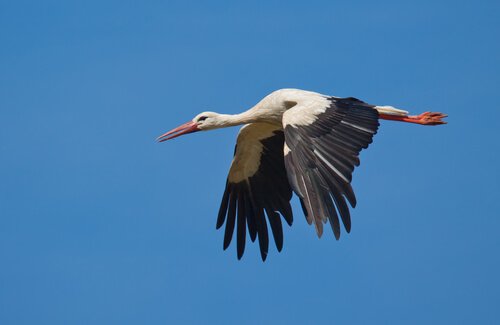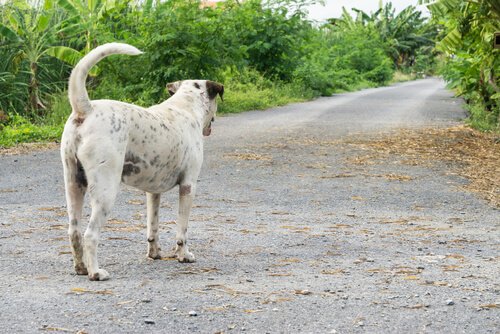The Sense of Orientation in Dogs


Written and verified by the lawyer Francisco María García
There still is a lot to learn about dogs’ senses of orientation. Throughout history, numerous legends have been made up about dogs’ ability to find their way home. Maybe it’s because there’s a lack of a logical explanation, but experts in canine nature have always been curious about this topic.
Since there is no absolute theory, technological advancements and science have allowed people to improve their understanding of the dogs’ sense of orientation. So, here you can read about the main hypotheses about this incredible ability that dogs have.
Sense of orientation in other species
To better understand dogs’ sense of orientation, you can look at other species that greatly benefit from this ability. A good example is the in flight orientation of birds. This allows them to make very long migratory journeys in which they always return to their initial destination.
Scientists have done several studies on different parts of the world in order to understand the orientation of birds better. Many experiments were consisted of releasing certain birds thousands of kilometers from their “homes” to observe their behavior.
The results always show that, after days or weeks of travel, birds return to their place of departure.
Some tests have also shown that birds are able to reorient themselves after experiencing some temporary disorientation. Even when they’re lost, their sense of orientation allows them to return to their course.

How do you explain this amazing sense of orientation in birds?
Currently, the scientific community is working with two theories that are probably complementary. The first states that birds use their sense to locate themselves in time and space.
Birds use their eyes to recognize mountains, cliffs or jungles to help them stay on the right path. They also use their hearing to perceive stimuli in the landscapes of their long migratory journey. That means, they collect “signals” that keep them well-oriented so they know when they’ve arrived at their destination.
According to many experts, birds have a kind of inertial navigation. They manage to know what direction to take in order to return to their destination, even when they have to change direction. This would also explain why temporary distraction or disorientations don’t affect their orientation abilities.
Scientists have also observed that migratory birds have a system in their eyes very similar to a magnetic compass. Their retinas are capable of capturing light in a polarized fashion. This provides them with a unique navigation system.
The birds use the movement of the sun and the position of the stars and the moon as an effective navigation method. That helps them figure out how to travel in order to reach their destination.
How does the sense of orientation work in dogs?
Regarding a dog’s sense of orientation, there are also two main hypotheses that slightly resemble the aforementioned.

Their powerful senses can help them easily identify their environment and recognize any changes in it. Their great hearing abilities and highly-developed sense of smell allow them to recognize landmarks as well as trails they can follow to get home.
Also, the molecule cryptochrome 1 has been identified in the retina of dogs’ eyes. This is also found in the eyes of migratory birds. This molecule is associated with magnetic reception. Its presence in the eyes allows animals to orient themselves in time and space through the planet’s magnetic field.
The importance of emotional bonds when it comes to orientation in dogs
In addition to the aforementioned, scientists also highlight how well dogs adapt to positive reinforcement. This is their ability to learn and memorize numerous tasks through a system of recognition and rewards.
Of course, positive reinforcement in dog training isn’t just about offering treats or rewards; there is a lot more to it.
The pillars of this methodology are linked between who teaches and who learns. This exchange of experiences helps both the owner and dog during their training.
This text is provided for informational purposes only and does not replace consultation with a professional. If in doubt, consult your specialist.